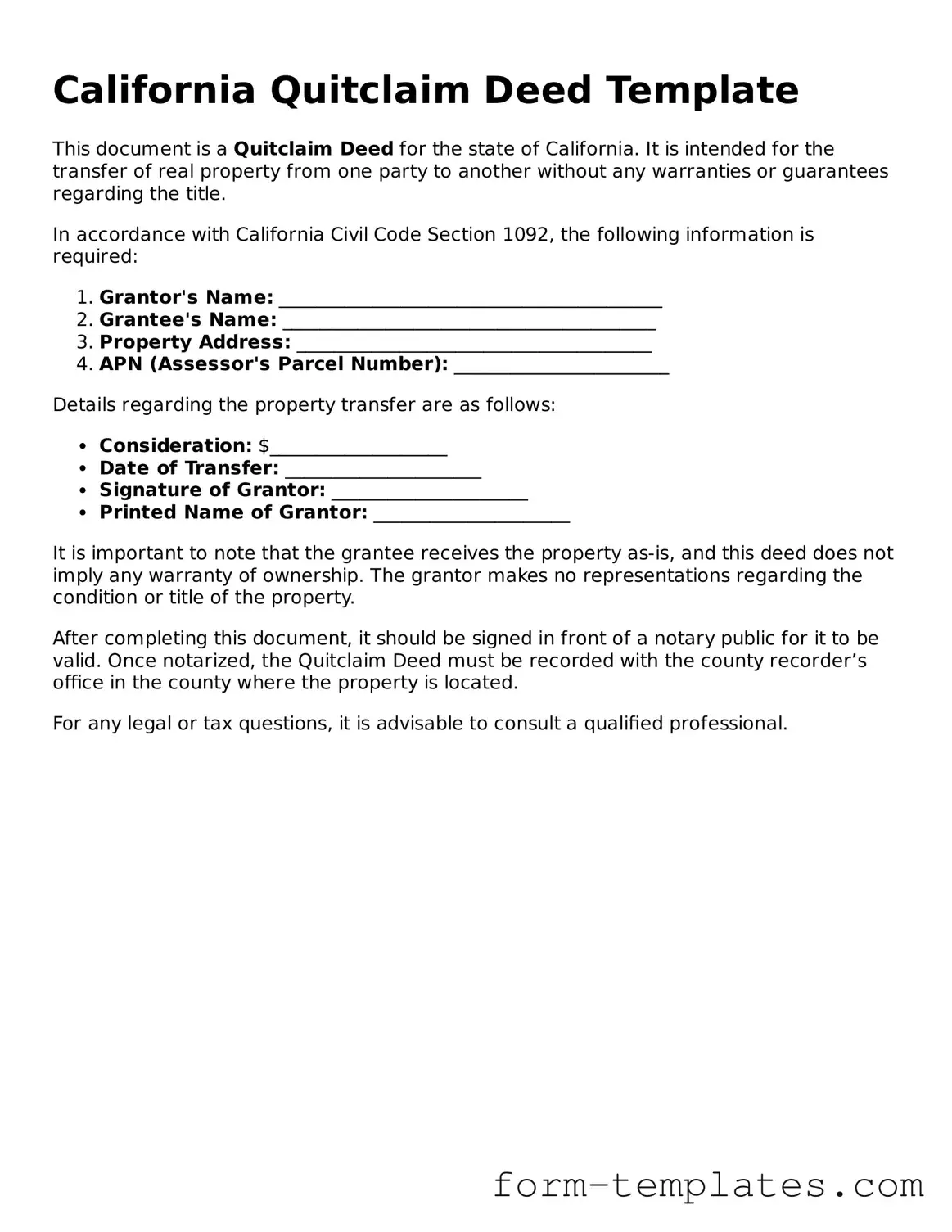California Quitclaim Deed Template
This document is a Quitclaim Deed for the state of California. It is intended for the transfer of real property from one party to another without any warranties or guarantees regarding the title.
In accordance with California Civil Code Section 1092, the following information is required:
- Grantor's Name: _________________________________________
- Grantee's Name: ________________________________________
- Property Address: ______________________________________
- APN (Assessor's Parcel Number): _______________________
Details regarding the property transfer are as follows:
- Consideration: $___________________
- Date of Transfer: _____________________
- Signature of Grantor: _____________________
- Printed Name of Grantor: _____________________
It is important to note that the grantee receives the property as-is, and this deed does not imply any warranty of ownership. The grantor makes no representations regarding the condition or title of the property.
After completing this document, it should be signed in front of a notary public for it to be valid. Once notarized, the Quitclaim Deed must be recorded with the county recorder’s office in the county where the property is located.
For any legal or tax questions, it is advisable to consult a qualified professional.
